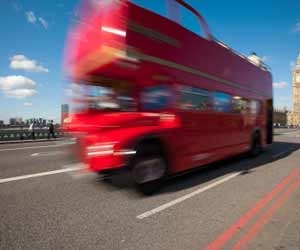Indonesia Transportation Options
Urban Mass Transit
Because very few Indonesians own automobiles, using public transport is a surefire way to experience the locals face-to-face (or knee-to-knee). In general, travel in Indonesia is cheap, hot, cramped, colorful, and often frustrating. Beware of pickpockets on crowded local buses.

Don’t wear a money belt on the outside of your clothes. Though it’s a bit uncomfortable, it’s worth it when you consider the hassle of being robbed.
Becak (pronounced bay-cha)
Found throughout Asia, these pedicabs can be seen in all major cities in Indonesia, dodging between buses and darting into intersections. Bargain hard for these rides – drivers often hang out at bus and train stations, preying on the recently arrived. Also beware of becak drivers who want to take you to a particular restaurant, losmen, or shop; they are paid a commission to do so and you might be taken advantage of.
On the up side, one American we know of used a becak the first week in the country to get to her teaching job. She and the driver agreed on a fare and he picked her up each day right on time. The two then became friends for the duration of the teacher’s ten-month stay in Indonesia.
Bicycles
If you’re staying in Indonesia for an extended period you’ll definitely want to consider buying a bicycle. There are countless used bicycle shops in every city, so check around to make sure you get a good bike for your money. Test the bike to see if the gears shift properly and the brakes and other moveable parts are in good working order. Bengkals are repair shops for motorcycles and bicycles and have been known to do nightmarish things with hammers!
It’s helpful if you know a bit of bicycle repair yourself.
Be sure to lock your bicycle everywhere, even for a quick, five-minute stop. If you can, bring a good helmet with you from home because most helmets in Indonesia are plastic and don’t offer much protection.
If you choose to buy a motorcycle, make certain you know how to ride before you go to Asia. It’s not really the best place to learn, as driving is confusing and chaotic. Somehow traffic manages to flow but it’s quite hair-raising the first time on the road.
Buses
Buses are very cheap considering the length and distance of the journey. They run everywhere roads do and are the primary form of transport for Indonesians. Each city has its own local system in addition to the national carriers, which specialize in long hauls. Drivers seem to believe in reincarnation and drive like they have multiple lives. Accidents are frequent and often horrendous.
Amenities on buses range from air conditioning to windows that don’t open to wall-to-wall bodies. Either way, you will be subjected to clove-scented cigarette smoke, loud music, and often a video. Expect to share your seat with children, luggage, chickens, pigs, and sacks of rice, and don’t bother to look for luggage racks; they don’t exist.
Taxis
Taxis are the best form of transport for those fresh off the plane or boat. You won’t have to hassle with finding the right bus route, taxi drivers in the bigger cities often speak a little English, and, most importantly, there will be a place to put your luggage.
Intercity Transportation
Bemo
The bemo – a small covered pickup truck with a bench on either side – is a popular form of local transport. The cost depends on the distance traveled but usually is quite cheap. As on buses, it’s best to have as little luggage as possible because there’s no room to store it. Expect a steady stream of passengers on any given trip; on one bemo ride on Sumatra one of our authors counted twenty-four passengers at once!
Bemos usually don’t leave the terminal until the vehicle is full. Sometimes you’ll wait a long time and the heat can be suffocating. A common ploy used by bemo and bus drivers is to charge travelers for their backpacks, which they consider to be extra passengers. Don’t be sucked in by this scam. Just get off the bus or bemo and find another one. It makes the situation worse if you get angry, so stay cool and relax. Bemos are as plentiful as rice.
Boats
As an island country, Indonesia has an extensive marine transport system. The government-owned Pelni line provides regular service between the larger islands; smaller, private boats service the less-populated islands on less frequent runs. Passengers have the choice of a berth in a cabin (usually for four or six people) or an economy-class spot on the covered deck, which is often nothing more than a row of bodies. Coffee, tea, and rice are usually available, but it’s a good idea to bring your own munchies.
One of the better journeys we’ve heard of is the story of an English teacher’s four-day trip from Kupang, on the island of Timor, to Lombok Island. It cost about US$60 in a second-class cabin. She got three meals per day, tea at 4pm, and a comfortable bed to sleep in. Her fellow travelers were in economi kelas and spent the trip sleeping side-by-side on platforms.
Trains
Only the island of Java has an operative rail system. Trains usually are faster and infinitely safer than buses, often have meal service, and, unlike on buses, you usually will have a place to sit if you travel first- or second-class. In economy class, people put newspapers on the floor and lie down completely outstretched for the duration of the journey. You should purchase train tickets at least a day in advance if you want to have a seat.


 Teach English in Asia
Teach English in Asia  Cruise Ship Jobs
Cruise Ship Jobs  Alaska Fishing Industry Jobs
Alaska Fishing Industry Jobs  Sharing Economy / Gig Economy
Sharing Economy / Gig Economy